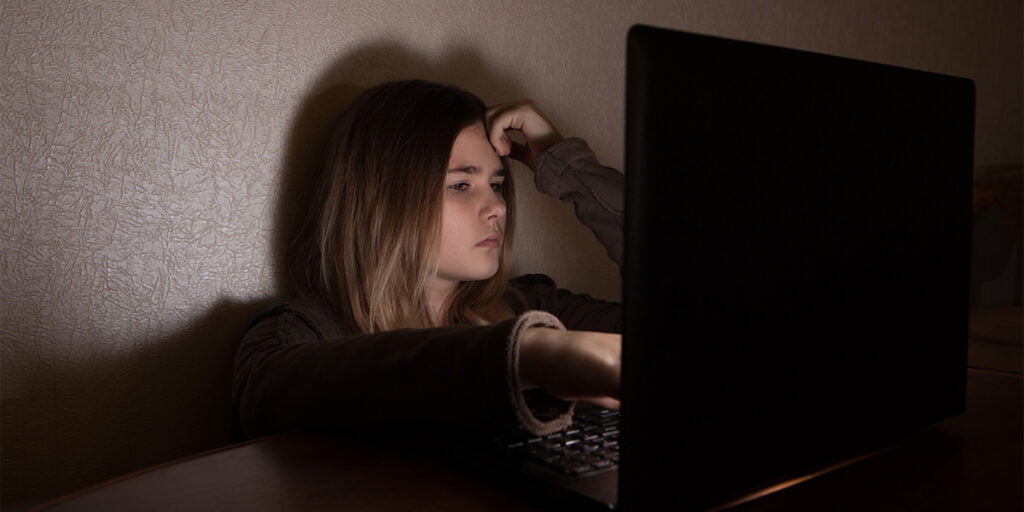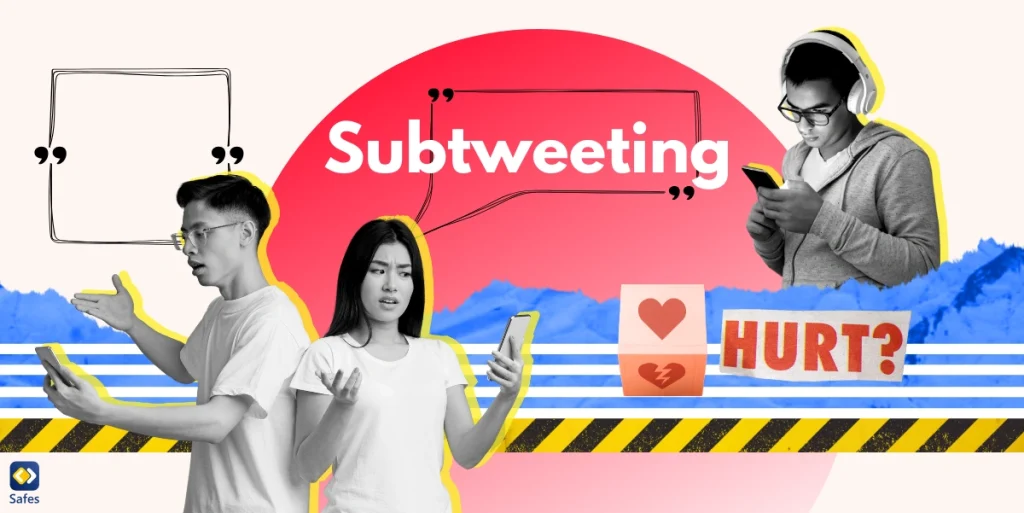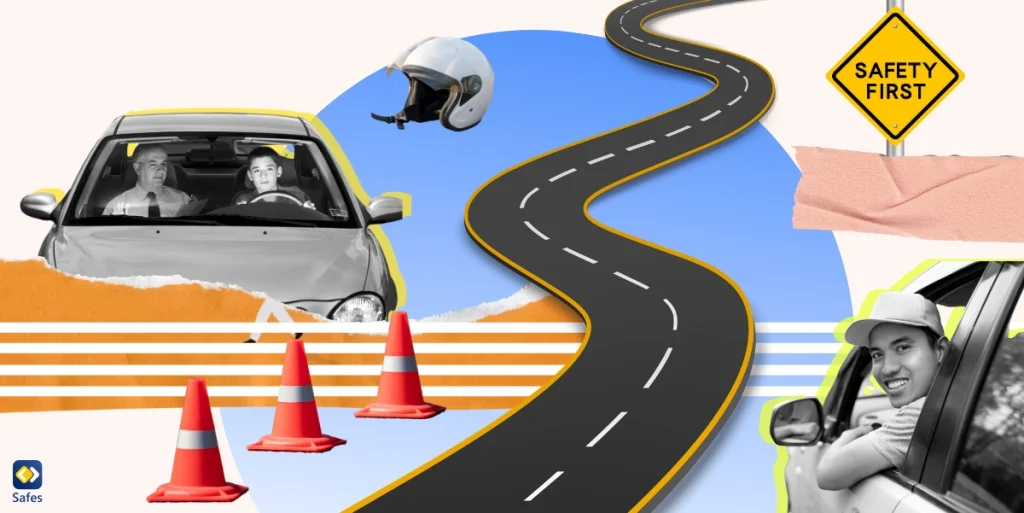Children tend to fall victim to bullying more often than adults. That’s perhaps because children are more sensitive to bullying and don’t know how to deal with it, and child bullies tend to get away without punishment. On the other hand, adults know how to protect themselves, and adult bullies know there will be consequences for their actions.
Cyberbullying follows the same pattern. According to the Pew Research Center, children are cyberbullied almost two times more than adults in the United States. Sadly, due to the embarrassment they undergo, most children don’t notify an adult about being bullied.
People often tend to take cyberbullying lightly, but the effects on our children can be tremendous. To protect our children effectively, we need to answer one question first: what are the effects of cyberbullying on children? In this article, we will discuss the effects of cyberbullying and provide tips on helping cyberbullying victims.
The Effects of Cyberbullying on Children
Cyberbullying in children should not be taken lightly since it severely affects the victims. A good source of inspiration for parents is 13 Reasons Why. It’s a series about a teenager who falls victim to repeated types of bullying, including cyberbullying, which results in her decision to end her life.
Cyberbullying has psychological, physical, and social effects on the victims. We will discuss these negative impacts in the following.
Psychological Effects of Cyberbullying
How does cyberbullying affect people’s mental health? Constantly being exposed to negative comments aimed at humiliating a person and hurting their feelings can result in several mental health problems. One of these problems is the increased risk of anxiety and depression. These risks can be even more severe in children. An article published in the Journal of Adolescent Health in 2016 shows that being a victim of cyberbullying can predict the onset of depression and anxiety in adolescents. Unfortunately, these effects are long-term and can manifest years later after the incident.
Another issue that cyberbullying can cause for children is low self-esteem. This is not too surprising: Children are still developing their identities and searching for their self-perception. They automatically turn to external cues to shape their idea of who they are. When they face someone who constantly belittles and insults them, they’ll think what they hear is the truth. If they internalize this idea, they’ll need years of therapy and effort to help them understand that they’re valuable human beings.
In more severe cases, cyberbullying can lead to self-harm and suicidal ideation. According to DataProt, cyberbullying doubles the chances of having suicidal thoughts. However, the problem should be investigated more deeply because there are usually more than one factor that contribute to a person’s decision to end their life. That’s what this article published in the Journal of Preventive Medicine has studied: the factors that increase the risk of cyberbullying-related suicide are having a history of mental health issues, obesity, autism, the severity of cyberbullying, etc.

Physical Effects of Cyberbullying
When it comes to physical problems arising from emotional distress, the main culprit is stress. As we know, children who are cyberbullied experience a lot of stress, anxiety, and anger. Too much stress can have long-term effects on our health. For example, overly stressed people can develop gastrointestinal problems, such as inflammatory bowel disease (IBD), irritable bowel syndrome (IBS), and stomach ulcers.
Stress can also disrupt children’s sleep. Since sleep is very important in young people’s development, a disrupted sleep pattern can affect their mood, cause aggression, and prevent them from focusing on their studies. If you’re wondering what the effects of cyberbullying are on students’ health, here’s the answer. Cyberbullying can lead to poor academic performance and create more negative feelings in them.
Social Effects of Cyberbullying
Victims of cyberbullying tend to experience isolation and social exclusion. As mentioned earlier, cyberbullying affects children’s self-esteem. It contributes to the development of a negative self-image. A child with low self-esteem finds it difficult to socialize and make friends. The inability to form relationships worsens their pre-existing symptoms. This will turn into a vicious cycle of negative outcomes.
Escaping from the pain and distress that cyberbullying causes in adolescents can have another adverse outcome: engaging in risky behavior. A cyberbullied teen might look for something to separate them from the painful reality. That’s where behaviors such as drug abuse come into play. These behaviors can be diverse: Imagine a child who is suffering from their inability to form relationships. So, they’ll start talking to the first person who seems to be interested in them, which, in this case, is an online predator.
Cyberbullying vs. Bullying Effects
Bullying and cyberbullying are the same in essence: physically or psychologically hurting someone to gain dominance and power over them. The most significant differentiating factor of cyberbullying is that it happens in the cyber world. Bullying behavior usually involves damaging someone’s property, hurting someone physically, and using spoken words or physical tools and mediums to harm the bullying victim. On the contrary, cyberbullying only relies on the cyber world and digital devices.
That said, cyberbullying is much harder for children to avoid. Traditional bullying usually takes place in a specific place, such as a school. However, cyberbullying seems to follow the child everywhere they go. People might recommend just turning the phone off. But it’s easier said than done. For example, if the cyberbully is spreading rumors about a child, they’re not going to stop when they put their phone away. That’s why, in the next section, we’ll explain how to help children who are being cyberbullied.

How to Help Cyberbullied Children
If you suspect your child is experiencing cyberbullying, the first thing you need to do to help them is to have an intimate talk with them. When talking to your child, you should always remind them that victims of cyberbullying haven’t done anything to ‘deserve’ this much aggression from others. Therefore, you should support your child emotionally and practically.
If you ever find out your child has been a victim of cyberbullying, you shouldn’t ban them from using the internet and sending text messages because they could be the only way your child communicates with others. Instead, you should make sure they’re safe online. To do so, you can use the Safes parental control suite. Using Safes, you can monitor their online activities. You can also protect them from cyberbullying on online gaming platforms that children and youth often experience. Take advantage of our free trial today to experience how Safes can protect and empower your child online.
Moreover, gather evidence of cyberbullying to show to school authorities, parents, or the police. After that, block the abusers to stop them from further harming your child. You can also report the bullies’ accounts to the platforms your child uses to have them removed. Don’t hesitate to seek professional help if your child is distressed. Psychotherapy and support groups can help your child get back to a normal life.
Bottom Line
Cyberbullying is a serious issue that’s threatening many children’s well-being today. As parents, we should be on the lookout for cyberbullying signs in our children. This is done through careful observation of their behavior: A low mood, difficulty sleeping, and aggressive behaviors can be signs that your child is being cyberbullied.
You can also have a more proactive role in protecting your children by not giving them unsupervised online time. Just like you would protect your child on the streets, you should also make sure they’re safe in the digital world. Remember, the impact of cyberbullying can be serious. So, if your child has fallen victim to cyberbullying, do your best to help them.





